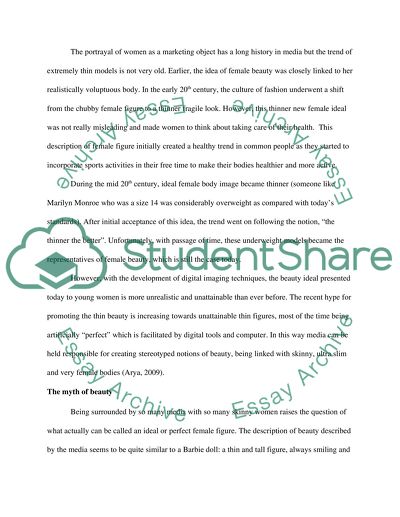Cite this document
(“Research Paper: In the US, fashion magazines advertising creates Essay”, n.d.)
Research Paper: In the US, fashion magazines advertising creates Essay. Retrieved from https://studentshare.org/miscellaneous/1561221-research-paper-in-the-us-fashion-magazines-advertising-creates-unrealisitc-expectations-for-young-womens-leading-to-lowering-of-self-esteem-which-can-be-remedied-by-awarness-campains-education-and-an-enforcement-of-ethic-codes
Research Paper: In the US, fashion magazines advertising creates Essay. Retrieved from https://studentshare.org/miscellaneous/1561221-research-paper-in-the-us-fashion-magazines-advertising-creates-unrealisitc-expectations-for-young-womens-leading-to-lowering-of-self-esteem-which-can-be-remedied-by-awarness-campains-education-and-an-enforcement-of-ethic-codes
(Research Paper: In the US, Fashion Magazines Advertising Creates Essay)
Research Paper: In the US, Fashion Magazines Advertising Creates Essay. https://studentshare.org/miscellaneous/1561221-research-paper-in-the-us-fashion-magazines-advertising-creates-unrealisitc-expectations-for-young-womens-leading-to-lowering-of-self-esteem-which-can-be-remedied-by-awarness-campains-education-and-an-enforcement-of-ethic-codes.
Research Paper: In the US, Fashion Magazines Advertising Creates Essay. https://studentshare.org/miscellaneous/1561221-research-paper-in-the-us-fashion-magazines-advertising-creates-unrealisitc-expectations-for-young-womens-leading-to-lowering-of-self-esteem-which-can-be-remedied-by-awarness-campains-education-and-an-enforcement-of-ethic-codes.
“Research Paper: In the US, Fashion Magazines Advertising Creates Essay”, n.d. https://studentshare.org/miscellaneous/1561221-research-paper-in-the-us-fashion-magazines-advertising-creates-unrealisitc-expectations-for-young-womens-leading-to-lowering-of-self-esteem-which-can-be-remedied-by-awarness-campains-education-and-an-enforcement-of-ethic-codes.


